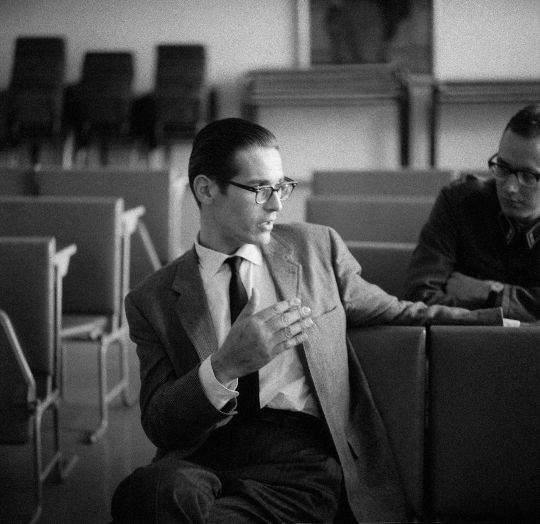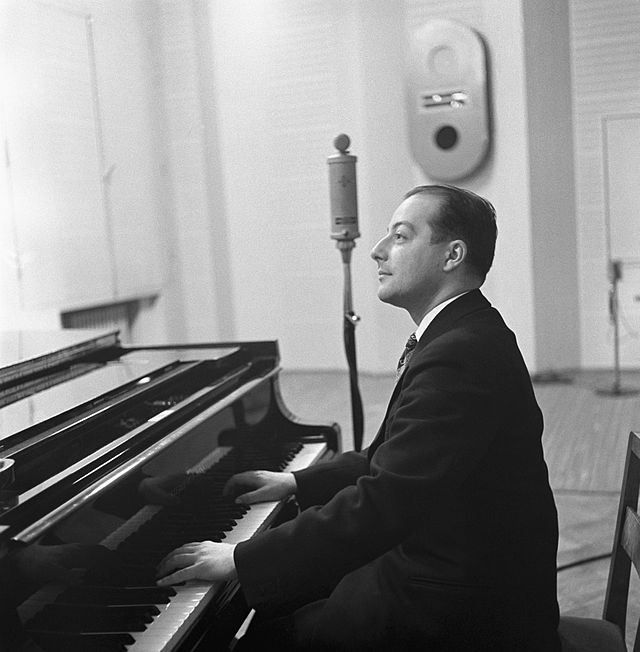
Table of Contents
Bill Evans childhood
Bill Evans was born on the 6th of August, 1929 in Plainfield, New Jersey. He started learning to play the piano when he was six years old. In 7 years, he added two more instruments to his repertoire. His first gig was when his brother Harry had to be substituted for Buddy Valentino’s band. He was familiar with the music it was the same kind of music that he was practicing at home. He continued playing boogie-woogie there on in clubs in and around New York City.

Bill Evans go to university and join the army
He was awarded a scholarship to Southeastern Louisiana University where he played to an audience Beethoven’s Third Piano Concerto in a recital in 1950. He left the institute with a degree in piano performance and teaching. While in college, he founded the Delta Omega Chapter of the Phi Mu Alpha Sinfonia – a fraternity for people with an interest in music.
After graduation, he served in US Army after which he returned to New York and continued to gig. He set himself up as a sideman for bands playing Third Stream jazz – an innovative mixture of classical music and jazz. While building up his reputation, he was a part of many studio recordings. He worked with George Russell to come up with work like Concerto for Billy the Kid and All About Rosie. He also was on albums by Tony Scott, Oliver Nelson, Art Farmer and Charles Mingus with whom he recorded during this period of time.
Bill Evans is widely cited as one of the most influential pianists in jazz history. Following the bebop revolution, Evans helped to establish a more subtle aesthetic through his contributions to Miles Davis’s album, Kind of Blue (1959). He developed this approach further in his trio with bassist Scott LaFaro and drummer Paul Motian, with all three players striving for a more interactive and nuanced approach. Unfortunately, this trio dissolved following the tragic death of Scott LaFaro just days after the group’s famous Village Vanguard performance of June 25, 1961. Evans’s reputation remained strong, however, through performances and recordings with later trios in the 1960s and 1970s Gross, Austin. “Bill Evans and the craft of improvisation.” PhD diss., University of Rochester: Eastman School of Music, 2011.
First recording: time to create new albums
His first recording of his own material was with his 1956 album New Jazz Conceptions. He got make his debut with album after being referred by Mundell Lowe to producer Orrin Keepnews. In 58′, he was invited to play with Miles Davis and the Miles Davis Sextet. The short stint that he had with the sextet was iconic as the sound of the sextet thereafter took a new direction.
Miles Davis describes Bill Evans’ style of playing in his autobiography. “Bill had this quiet fire that I loved on piano. The way he approached it, the sound he got was like crystal notes or sparkling water cascading down from some clear waterfall.”
Bill Evans creates his jazz trio
He left the band after running into trouble with drugs and also in search of new ground to conquer. He recorded Everybody Digs Bill Evans which had a new style that he had been working on at the time. After a short recording stint recording the iconic 1959 album Kind of Blue, he went back solo and formed his own trio with bassist Scott LaFaro and Paul Motian on the drums. The trio stuck to jazz standards and original composition involving a lot of improvisation.
They had four albums between 1959 and 1961 – Portrait In Jazz, Explorations, Sunday At The Village Vanguard and Waltz For Debby. All these four album except Portrait In jazz were released in 1961. Waltz I jazz was released in 59′. Sunday At The Village Vanguard and Waltz For Debby are regarded as one of the greatest jazz recordings of all time.
Evans experimented with interplay with a little more freedom with his trio. He used slow ballad like tempos for the songs and used quiet volume levels which was the first that it was ever done in jazz. His chords had a classical touch to it becoming more and more impressionistic. His left hand playing and right hand playing were so complimentary that you could see a Bud Powell influence.
While jazz players find Evans influential, they also simply enjoy listening to him. Shortly after his passing in 1980, jazz pianists ranked Bill Evans as their own favorite jazz pianist.1 One reason for his influence and appeal is surely his left-hand voicings. These innovative sonorities created a lush cushion for his right-hand lines as well as for the solos of the other members of the group. But while these voicings may be central to Evans’s playing, it seems unlikely that any jazz pianist could have achieved such a formidable reputation without the ability to play stellar melodic lines as well. Gross, Austin. “Bill Evans and the craft of improvisation.” PhD diss., University of Rochester: Eastman School of Music, 2011.
Pushing the lid further, Evans was the pioneer of avoiding bebop and other jazz forms in favor a new style – modal jazz. His bassist collaborator Scott LaFaro passed away young at 25 which made Evans take some time off to come to terms with his death. Breaking more ground in 1962, he recorded an album that is considered a classic jazz piano and guitar duet album.
He got bassist Chuck Israel to take the place of LaFaro in the trio. The new group continued recording winning a Grammy for their 1963 release Conversations With Myself. It was not all rosy a period for the trio with their music not selling well. Their manager Helen Keane brought the band back on track.
The entry of bassist Eddie Gomes into the band make things look up a bit creatively for the band. The 1968 live recording Bill Evans at the Montreux Jazz Festival is considered the pianist’s best because of the interplay and the energy that the band displayed throughout the show.
Bill Evans passed away on the 15th of September, 1980 due to a bleeding ulcer, cirrhosis and bronchial pneumonia.
References
Reilly, J., & Evans, B. (1994). The Harmony of Bill Evans. Hal Leonard Corporation.
Israels, C. (1985). Bill Evans (1929-1980): A Musical memoir. The Musical Quarterly, 71(2), 109-115.
Gross, Austin. “Bill Evans and the craft of improvisation.” PhD diss., University of Rochester: Eastman School of Music, 2011.




